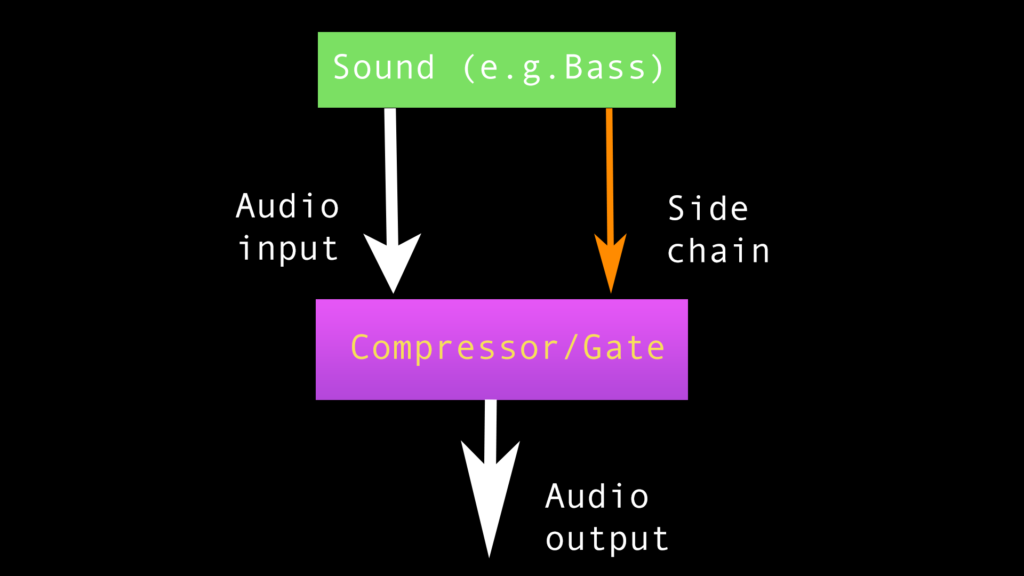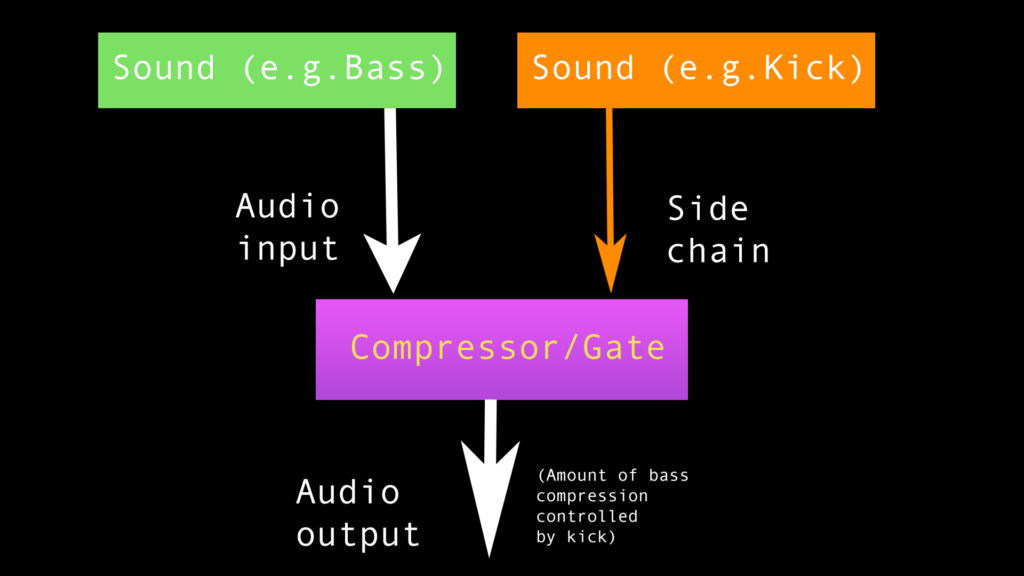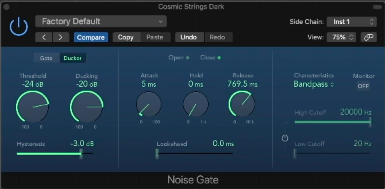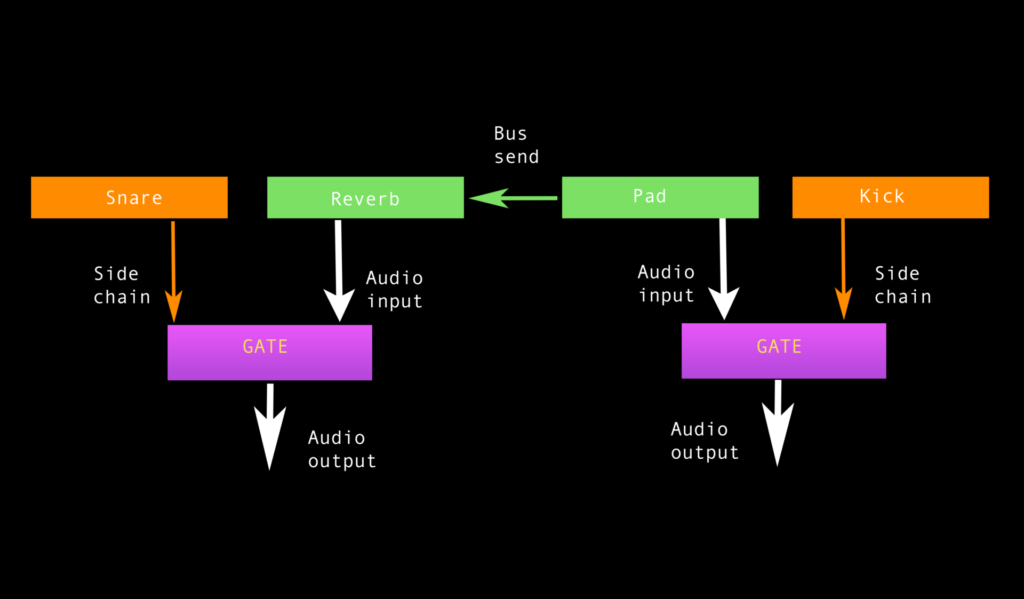Music Production Tutorial #2
How To Side Chain A Compressor Or Gate
In this article we’ll look at how to side chain a gate or compressor as well as some potential avenues for creative musical use. So you’ve already been using gates and compression a little bit in your DAW? That’s good because side chaining is a slightly more advanced feature of them.
Before we go any further, look at our tutorial on compression if you’re not familiar with that yet!
What is a side chain?
The side chain is the part of the processor that is listening to the sound to see if it crosses the threshold or not. It’s useful to think of the processor having two inputs. One is for the audio to be processed and one for the side chain which commands the compressor/gate to act or not.
Ordinarily, the side chain is the same piece of audio that is going to be compressed like the example below:

Every time the bass crosses the threshold, the side chain tells the processor to start compressing. When it falls below the threshold it stops the processing.
Side Chaining -> One Sound Controls Another
‘Side Chaining a Compressor‘ usually means we’re going to feed a different sound to the side chain. This will mean that another sound, say the kick drum is now telling the gate when to gate the bass and when not to.

It’s key to remember the kick drum is not affected by this. It’s just a copy of the kick sound that is sent to the compressor via a buss send. The original kick is intact and remains on its own track.
Examples of the side chain being used in music
Have a go at this yourself, or listen to the examples in the video. It quickly connects the two sounds together as one is reacting to the other in a very obvious way. The most recognisable and obvious uses of side chaining is in trance music and some other commercial EDM like THIS TUNE HERE. Don’t let that put you off though!

Pumping with a compressor
This effect can help the kick drum sound more massive because it seems to smash the other sounds out of the way when it hits. This is tapping into some psychoacoustics – our ‘ears’ adapt in sensitivity relative to the loudest sounds at any one time in the environment.
This is why we can hear all the little creaking noises around the house at night when they are the loudest sounds. During the day, the ambient noise (from passing cars, next doors lawnmower, the TV on downstairs etc.) is louder and so these noises are pushed into the background.
The pad is made to sound smaller as the kick hits. This gives the impression the kick is louder. So loud, it has momentarily made the other sounds seem quieter. The reduction of the pad at that moment also creates more space in the mix. This allows us to hear the kick drum more clearly and with more punch. In addition to this, the ‘pumping’ of the compressor back and fourth creates a rhythmic pulse with the pad. The push/pull of this system between kick and pad is quite effective.
Ducking With Gates
If we put the gate into ducking mode, it will act in reverse. When the threshold is crossed, the gate will close. When the signal falls below the threshold, the gate will open. In this way, it’s acting more like a compressor with infinite ratio.

Using the gate in ducking mode with a side chain like this we ‘switch off’ one sound to make way for another. Like the example above, this will allow the sound entering the side chain to cut through the sound being gated.
More Creative Uses of Side Chaining
One way to do this is to add reverb to a pad, gate the reverb and put the gate into ducking mode. Now when the snare hits, the reverb will be cut off momentarily. This allows the snare that little bit more space to cut through and sounds way more punchy. See the end of the video for an example of this.

Once you have this idea in your toolkit it becomes really handy often. Whether it’s to glue sounds together more in a band mix or to create really artificial sounds in electronic music it can be fun to play around with.
Try using it in more subtle modes (compressor with low ratio) to gently allow room for other sounds. An old trick is to send the vocal to the side chain of the guitar(s)/pads compressor and allow them to reduce by 1/2dB when the singing happens. If you get the attack and release times right, it can sound really effective in the right places.
There’s a ton of potential uses for this one, go have fun with it! Check our tutorials page for more music production guides 🙂
